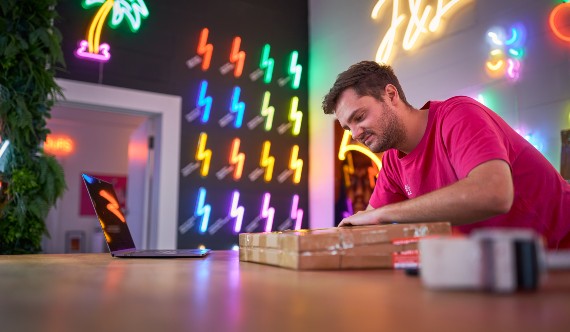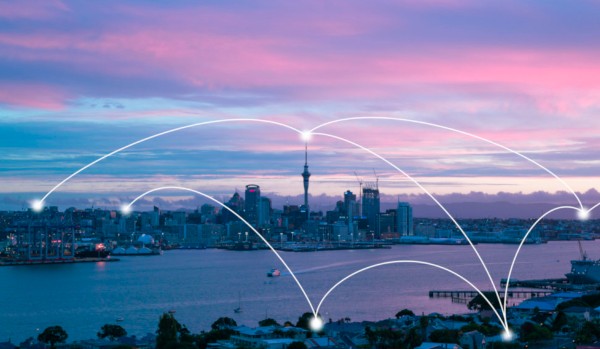Why IoT? Why now?
Connected electronics have been finding their way into industrial equipment and vehicles for decades, but the idea goes back even further. So why has the conversation about the Internet of Things recently taken on a more urgent tone? Why are we talking about the risks of not adopting IoT?
These are the questions that tech journalist Russell Brown put to a panel of IoT experts at a Spark event in Auckland. These experts included:
- Tessa Tierney, Product Director for Spark NZ
- Stephen Brown, Director of Directed Electronics NZ
- Kriv Naicker, Managing Director of Synaptec and Chair of the NZ IoT Alliance
The panellists agreed that the reasons IoT has come to the forefront are complicated yet compelling.
The value of IoT
Kriv says that one key change of late are opportunities for "horizontal leverage" – or creating IoT solutions that have multiple applications.
In the past, Kriv says, "A lot of the M2M [machine-to-machine], the telemetry and telematics solutions, were bespoke or vertically integrated. And a lot of them, from a supply-chain perspective, were hard-wired into industries. And what that didn't enable us to do was to be able to share data or experiences, value from those deployments across industries, across experiences, across sectors."
By contrast, says Kriv, IoT now implies not only shareable data, but also technical solutions that can be adapted and reused across sectors. Nobody should say that "we're building a specific IoT solution just for arable farming and it can't be used anywhere else. And that's where we were a long time ago, and that's where the change and the promise of IoT is taking us: shareable, reusable value."
Learn more about Synaptec
IoT for freight companies
Likewise, Stephen observes that "heavy vehicles have always had some sort of capturing device of data".
As device and communication costs come down, IoT technology becomes more compelling. And it's compelling not only to the providers, but also to the consumers of, say, heavy freight services. These consumers may have a different set of interests than the providers, as Stephen explains.
"Most of the freight companies up to a certain point have only really known, 'Where is my vehicle and how is it being driven?' But now," he says, "due to customer demand, whether it be from the food producer or the consumer, they are asking for a much more holistic view. They don't just want to know where it is – they want to know the temperature of the product, or the time it arrived and the time it left. Because there's this whole visibility that's now available to the end consumer.
IoT from Spark NZ
Part of the shift in the New Zealand market is down to Spark's own decision to prioritise IoT and develop products around it.
"I think it goes to the core of who we are as a business," says Tessa. "For us it's as much about ... people and the outcomes for New Zealand as it is about the technology itself.
"I think one of the most common challenges we hear from our customers in this space is around the complexity involved – partners, devices, best practices in the ecosystem. And Spark has played an integral role for many, many years in New Zealand as an aggregator and an integrator. So we see it as, yes, we can be the connectivity partner. I think that's core to us. But on top of that, we can actually start to bring together the story for you, so you can be agnostic to your devices and sensors, you can actually talk about your business outcomes that you need to provide. And we can try and understand that alongside you, and we can stitch that together."
The other key factor, she says, is security and Spark's established role as a secure digital services provider. These security concerns come amid a shift that potentially open Kiwi businesses to new threats. "That promise and commitment we make to our customers is very much alive and well in an IoT context."
Business partnerships
A key element of Spark's place in the market has been to choose the right partners. But the panellists agree that whoever fills that role, partnerships are vital in the age of IoT.
Part of forming partnerships, according to Kriv, is the way IoT intersects with other technologies. "IoT is a part of the 5G landscape. It's a part of the AI/machine learning landscape. It's a part of mobile edge computing and phone computing and AR/VR."
As an example, he describes Spark's 5G Lab. He says of the Lab, "it's not just an IoT implementation; it's IoT intersected with AI/machine learning, intersected with phone computing, intersected with AR/VR."
Stephen says his current projects with heavy industry make use of partnerships around shared data that haven't existed before. In the transport industry, partnerships can involve government, regulators and vendors looking to leverage road-use data into new business models like distance-based licensing.
Evaluating IoT solutions
The key for business probably starts with asking the question, "Could this help?"
Tessa says that's the approach Spark is taking with customers.
"If you bring us the problem, ask the question, 'Is IoT something that could help with this?' I think the way that we operate now as a business in terms of agility means that it's easy for us to work with you around a proof of concept or a pilot to try at least get something stood up to see early return on value."
All the panellists agreed, IoT is in motion. And things in motion tend to stay in motion.




